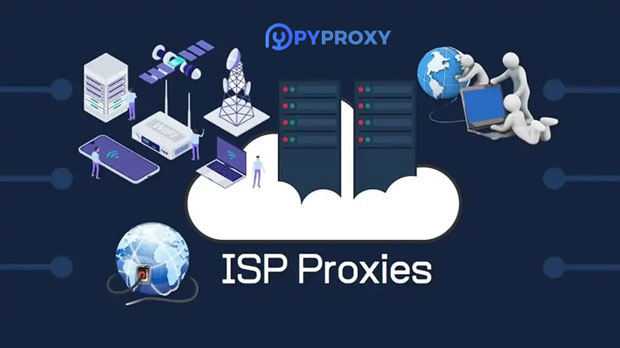In today's digital world, proxies are essential tools for ensuring online privacy, circumventing restrictions, and enhancing web scraping activities. However, not all proxies are created equal, and it is important to test whether the IPs provided by services like ProxyScrape are usable for your intended purposes. ProxyScrape offers a vast collection of proxy ips, but the real challenge lies in verifying which ones are functional and reliable. This is where a Proxy Checker tool comes into play. By combining ProxyScrape with a Proxy Checker, users can ensure they are working with active and usable IPs, saving time and improving efficiency. In this article, we will explore how to combine these two tools effectively to test the usability of IPs. Understanding ProxyScrape and Proxy CheckerTo begin, let's define what ProxyScrape and Proxy Checker are and how they serve different but complementary purposes in the world of proxy usage.1. ProxyScrape: This is a proxy scraping tool that collects free and public proxy ips from around the web. These proxies may be HTTP, HTTPS, or SOCKS5, and are typically provided with metadata such as country, anonymity level, and response time. 2. Proxy Checker: A Proxy Checker is a tool that tests the validity and performance of proxy IPs. It checks whether an IP can successfully establish a connection, how fast the connection is, and whether the IP is anonymous. Proxy Checkers can also assess the type of proxy (e.g., HTTP, HTTPS, SOCKS) and whether the IP is blocked or banned by certain websites.Both tools serve distinct purposes: ProxyScrape provides a list of proxies, and Proxy Checker ensures that the proxies from that list are usable for various online tasks.Why Is Proxy Testing Necessary?The necessity of proxy testing arises from the inherent issue of proxy reliability. Proxy IPs can often be unreliable due to various factors, such as:- Temporary Unavailability: Some proxies may be functional at one moment but become unresponsive shortly after.- Geo-blocking: Some IPs may work only in specific geographical locations and may not be usable elsewhere.- Blacklist Issues: Many proxy IPs are blacklisted by websites, which means they cannot access certain online platforms or services.- Speed and Latency: Even if an IP is functional, its speed and latency may not be ideal for specific tasks, such as web scraping.Thus, testing proxy IPs using a Proxy Checker ensures that users only work with functional and reliable IPs, saving time, effort, and resources.Steps to Combine ProxyScrape and Proxy CheckerNow that we understand the individual functions of ProxyScrape and Proxy Checker, let's explore how to combine them effectively to test usable IPs. Step 1: Download Proxies from ProxyScrapeThe first step in using ProxyScrape is to collect a list of proxy IPs. You can do this by downloading the available proxies in bulk, ensuring you choose proxies that fit your needs (e.g., HTTPS, SOCKS5). When selecting proxies, consider factors such as anonymity level, country of origin, and response time, as these can influence their performance. Step 2: Import Proxies into Proxy CheckerOnce you've obtained the list of proxy IPs, the next step is to import them into a Proxy Checker tool. This may involve pasting the IPs into the tool's input section or uploading a file containing the list of proxies. Many Proxy Checker tools allow users to input large numbers of proxies for batch testing. Step 3: Run the Proxy TestWith the proxies imported into the Proxy Checker, it's time to run the test. The tool will evaluate each IP's availability and performance, typically checking parameters like:- Connection Success: Does the proxy successfully establish a connection?- Response Time: How fast is the connection, and is it suitable for your needs?- Anonymity: Does the proxy hide your real IP address, or is it a transparent proxy?- Location and Geo-blocking: Does the proxy work only in certain regions, or is it globally accessible?Depending on the Proxy Checker tool you are using, the test results may provide additional information such as the proxy's reliability, the time it takes to establish a connection, and whether the proxy is usable for your specific task. Step 4: Filter Out Unusable ProxiesOnce the test is completed, the Proxy Checker will present a list of working and non-working proxies. At this stage, it is essential to filter out unusable proxies based on the results. For example, if a proxy is slow or doesn't connect properly, you should remove it from the list. Focus on proxies that have high connection success rates and low latency. Step 5: Use Validated Proxies for Your TaskAfter filtering out the unusable proxies, you are left with a list of functional IPs that you can use for your specific task. Whether you're using these proxies for web scraping, anonymity, or bypassing geographical restrictions, you can be confident that the remaining proxies are reliable and ready to perform.Benefits of Combining ProxyScrape with Proxy CheckerBy combining ProxyScrape and Proxy Checker, users can enjoy several key benefits:1. Access to a Large Pool of Proxies: ProxyScrape offers a wide range of proxy IPs, giving users access to an extensive pool of potential proxies for testing. 2. Efficiency in Proxy Selection: Proxy Checkers allow for the quick and efficient identification of usable proxies, which eliminates the need to manually test each one.3. Cost-Effective: Instead of purchasing premium proxies, users can leverage free proxies from ProxyScrape, while Proxy Checker ensures that only functional proxies are used, thereby increasing the value of the proxies.4. Enhanced Online Privacy and Security: Using a reliable Proxy Checker ensures that the proxies you select will protect your privacy and hide your real IP address effectively.5. Improved Performance for Web Scraping: By choosing proxies with fast response times and minimal latency, you can enhance the performance of your web scraping tasks, ensuring that data is collected quickly and efficiently.ConclusionIn conclusion, the combination of ProxyScrape and Proxy Checker is a powerful method for ensuring the usability of proxy IPs. ProxyScrape provides a large pool of proxies, while the Proxy Checker tool tests their functionality and performance. By following the steps outlined above, you can ensure that you are working with reliable and efficient proxies, thereby optimizing your online activities, whether for privacy, web scraping, or other purposes. By leveraging these tools effectively, you save both time and resources, ensuring a smoother and more productive experience with proxies.
Jun 25, 2025






















































